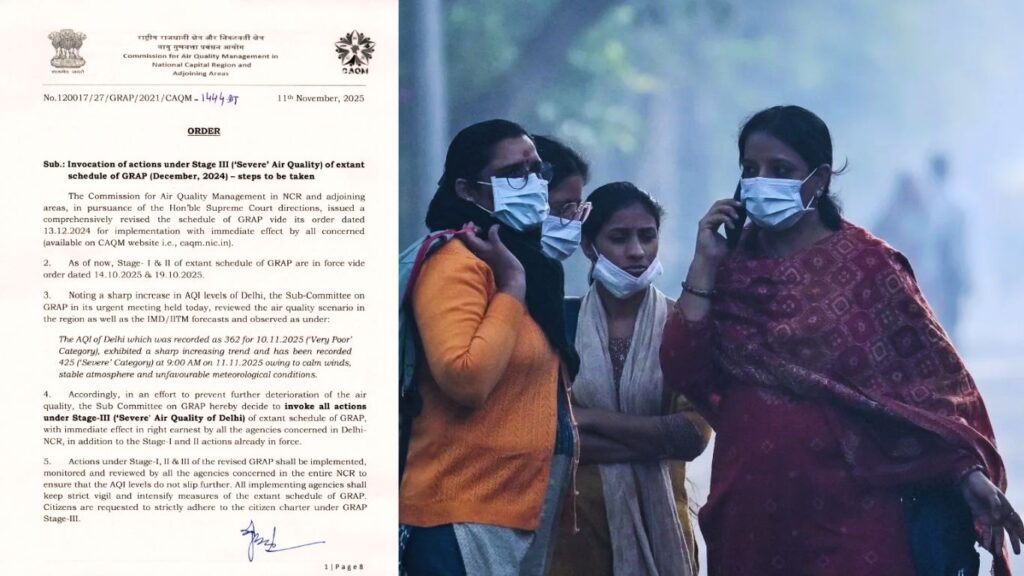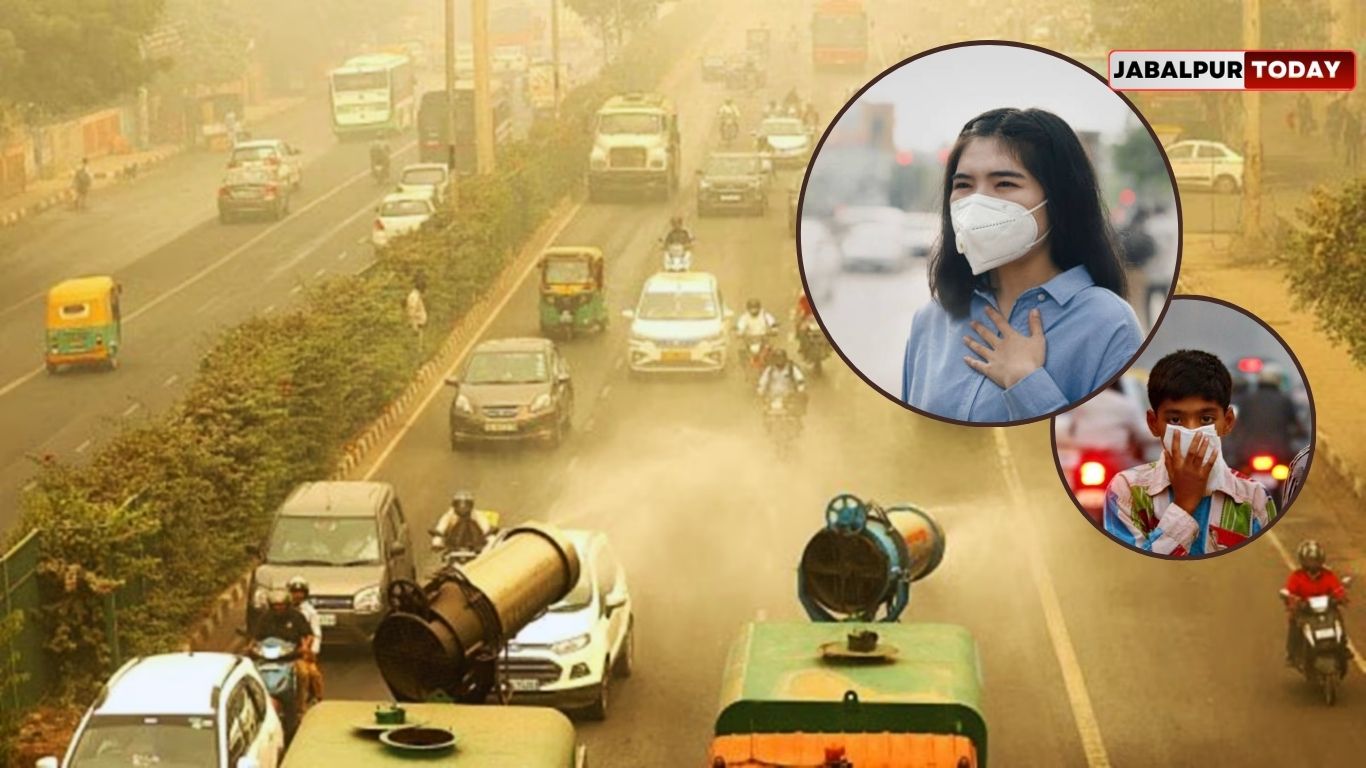Delhi-NCR air pollution hits severe levels as AQI soars to 425, prompting CAQM to activate GRAP Stage III. Learn about key bans, restrictions, and safety measures for citizens and industries.
New Delhi: Air pollution in Delhi and nearby areas has reached dangerous levels, with the Air Quality Index (AQI) soaring to 425 on November 11, 2025. In response, the Commission for Air Quality Management (CAQM) has activated Stage III (Severe Air Quality) of the Graded Response Action Plan (GRAP) to prevent further deterioration and protect public health. This step comes as winter smog, vehicle emissions, industrial activity, and stubble burning combine with calm winds and stable weather, trapping pollutants over the region.
What is GRAP and Why Stage III Was Invoked
GRAP is a set of emergency measures to fight pollution in Delhi-NCR, especially during winter when smoke, vehicle emissions, and stubble burning trap harmful particles in the air. The plan has four stages based on the Air Quality Index (AQI):
• Stage I: Poor (AQI 201–300)
• Stage II: Very Poor (AQI 301–400)
• Stage III: Severe (AQI 401–450)
• Stage IV: Severe+ (AQI above 450)
Stage III was triggered today because:
• Delhi’s AQI rose sharply to 425 at 9:00 AM on November 11.
• Forecasts from the India Meteorological Department (IMD) and JTMD predicted AQI around 362, but calm winds and stable weather trapped pollutants, worsening air quality.
• Existing Stage I (from October 14) and Stage II (from October 19) measures were not enough to prevent a health crisis.

The CAQM order follows Supreme Court directives from December 13, 2024, and the complete GRAP schedule can be found on caqm.nic.in.
Key Restrictions Under Stage III
All actions under Stage III must be implemented immediately across the entire Delhi-NCR by relevant agencies, in addition to ongoing Stage I and II restrictions. These steps focus on reducing emissions from major sources like vehicles, construction, and industries. Below is a clear list of the main restrictions:
Construction and Demolition:
• All non-essential construction and demolition work is banned, except for essential government projects like healthcare, railways, metro, airports, and sanitation.
• Stone crushers and mining operations must shut down.
Vehicles and Transport:
• Petrol vehicles meeting BS-III standards and diesel vehicles meeting BS-IV standards are banned in Delhi, Gurugram, Faridabad, Ghaziabad, and Gautam Buddh Nagar. Exceptions are made for disabled people and essential services.
• Public transport will be intensified, and odd-even vehicle rules may be implemented if needed.
• Parking fees may increase to reduce private vehicle use.
Education:
• Schools up to Class 5 must switch to hybrid learning (online + offline).
• Schools can go fully online to reduce exposure for children.
Industries and Generators:
• Polluting industries such as brick kilns and hot mix plants using non-clean fuels must close.
• Diesel generators are banned except for emergencies and essential services like hospitals.
• Use of coal or firewood in restaurants and tandoors is prohibited.
Other Measures:
• Enhanced road cleaning and water sprinkling to reduce dust.
• Stricter checks on vehicles and industries causing pollution.
• Work-from-home recommended for offices to reduce traffic.
Citizen Responsibilities:
• Use public transport or carpool.
• Avoid outdoor activities during peak pollution hours.
• Report violations through apps or helplines.
• Avoid burning waste or unauthorized fuels.
These measures are enforced under the Air (Prevention and Control of Pollution) Act, 1981, with penalties for non-compliance. Agencies like state pollution control boards, traffic police, and municipal corporations are responsible for monitoring and implementation.
Impact on Residents and Next Steps
Winter pollution in Delhi-NCR is a recurring problem due to local sources like traffic and dust, as well as stubble burning in neighboring states. Some areas, like Anand Vihar and Mundka, have AQI above 400. Health experts warn that severe air pollution can cause serious breathing problems, especially for children, the elderly, and people with pre-existing conditions.
CAQM has asked all agencies to stay vigilant and enforce Stage III measures strictly. Residents are advised to monitor real-time AQI using the SAMEER app or CPCB website. If pollution worsens and AQI exceeds 450, Stage IV could be activated, bringing stricter restrictions like total construction bans and limits on trucks entering Delhi.
This move by CAQM, under Supreme Court guidance, aims to control pollution in the short term, but long-term improvements require cooperation from government, industries, and citizens.
For more information, visit caqm.nic.in or contact local pollution control authorities.




